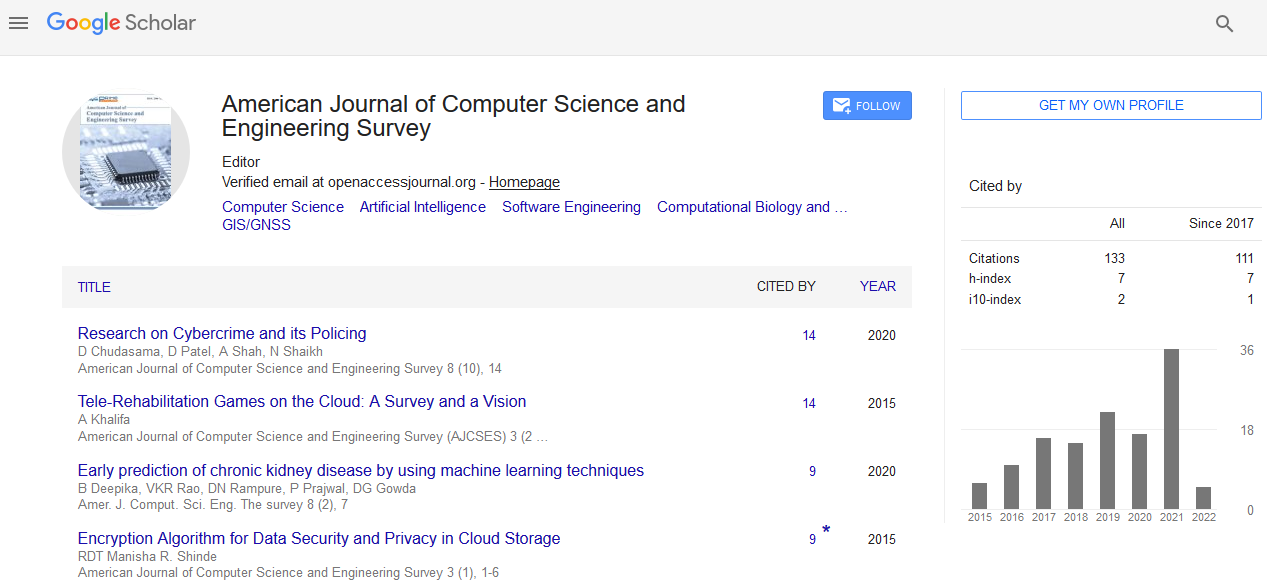Perspective - (2023) Volume 11, Issue 4
Geological surveys: Urban Development and Infrastructure Planning
Karan Madekar*
Department of Bioengineering, Yale University, USA
*Correspondence:
Karan Madekar,
Department of Bioengineering, Yale University,
USA,
Email:
Received: 29-Nov-2023, Manuscript No. ipacses-23-18460 ;
Editor assigned: 01-Dec-2023, Pre QC No. ipacses-23-18460 (PQ);
Reviewed: 15-Dec-2023, QC No. ipacses-23-18460 ;
Revised: 20-Dec-2023, Manuscript No. ipacses-23-18460 (R);
Published:
27-Dec-2023, DOI: 10.36846/2349-7238.23.11.38
Introduction
Geological surveys represent a cornerstone in the
understanding, mapping, and interpretation of the Earth’s
composition, structure, and history. These surveys employ
a range of scientific techniques to study geological features,
mineral resources, natural hazards, and environmental factors.
They play a vital role in various fields, including resource
exploration, environmental assessment, land use planning,
and hazard mitigation. Geological surveys delve into the Earth’s
composition, studying rocks, minerals, and fossils to unravel the
planet’s geological history and the processes that have shaped
its surface. Surveys identify and assess mineral resources,
such as ores, fuels, and precious stones, supporting mining
operations and resource management. Geological surveys
assess and monitor geological hazards, including earthquakes,
volcanic eruptions, landslides, and tsunamis, aiding in hazard
mitigation and disaster preparedness. Geologists conduct field
surveys to observe rock formations, map geological features,
and collect samples for analysis. Mapping techniques help
create detailed geological maps and models.
Description
Surveyors employ geophysical methods such as seismic
surveys, gravity measurements, and magnetometry to analyze
subsurface structures and detect potential mineral deposits
or geological anomalies. Remote sensing technologies,
coupled with Geographic Information Systems (GIS), enable
the collection, interpretation, and visualization of geological
data over large areas using satellite imagery and aerial
photography. Geological surveys assist in locating and
evaluating mineral deposits, guiding exploration activities
and supporting sustainable mining practices. Surveys play
a role in environmental impact assessments, evaluating the
effects of development projects on geology, soil quality, and
groundwater resources. Geological data informs land use
decisions, urban planning, and infrastructure development,
ensuring that construction projects account for geological
considerations to mitigate risks. Understanding complex
geological phenomena, especially those occurring beneath
the Earth’s surface, requires advanced analytical tools
and techniques. Advancements in surveying technologies,
including 3D modeling, remote sensing, and high-resolution
imaging, enhance the precision and efficiency of geological
surveys, allowing for better interpretation of geological
data. Geological surveys serve as vital tools in understanding
the Earth’s structure, history, and resources. By employing
various techniques and technologies, these surveys support
resource exploration, environmental assessment, hazard
mitigation, and land use planning. Continued advancements in
surveying methods and technologies will further enhance our
understanding of geological processes, providing invaluable
insights crucial for sustainable development and effective
management of Earth’s resources and hazards. By analyzing soil
quality, studying geological formations, and monitoring natural
habitats, surveys aid in conserving ecosystems and biodiversity.
Geological surveys inform urban planning decisions, ensuring
infrastructure development considers geological factors to
minimize risks and ensure stability. Understanding geological
features helps design and construct infrastructure resilient to
geological phenomena like ground movement or subsidence.
Conclusion
Ongoing advancements in surveying techniques, including
3D modeling, remote sensing, and GIS, enhance the accuracy
and efficiency of geological surveys. Improved data collection
and analysis tools make geological information more
accessible, aiding decision-making in various industries and
research endeavors. Geological surveys are indispensable
for understanding Earth’s dynamics, mapping resources,
assessing risks, and supporting sustainable development.
The data and insights gathered from these surveys have farreaching
applications, benefiting industries, communities, and
environmental conservation efforts worldwide. As technology
progresses, geological surveys continue to play a crucial role
in guiding responsible land use, resource management, and
mitigating geological hazards.
Citation: Madekar K (2023) Geological Surveys: Urban Development and Infrastructure Planning. Am J Comp Science. 11:38.
Copyright: �?�© 2023 Madekar K. This is an open-access article distributed under the terms of the Creative Commons Attribution License, which permits unrestricted use, distribution, and reproduction in any medium, provided the original author and source are credited.

